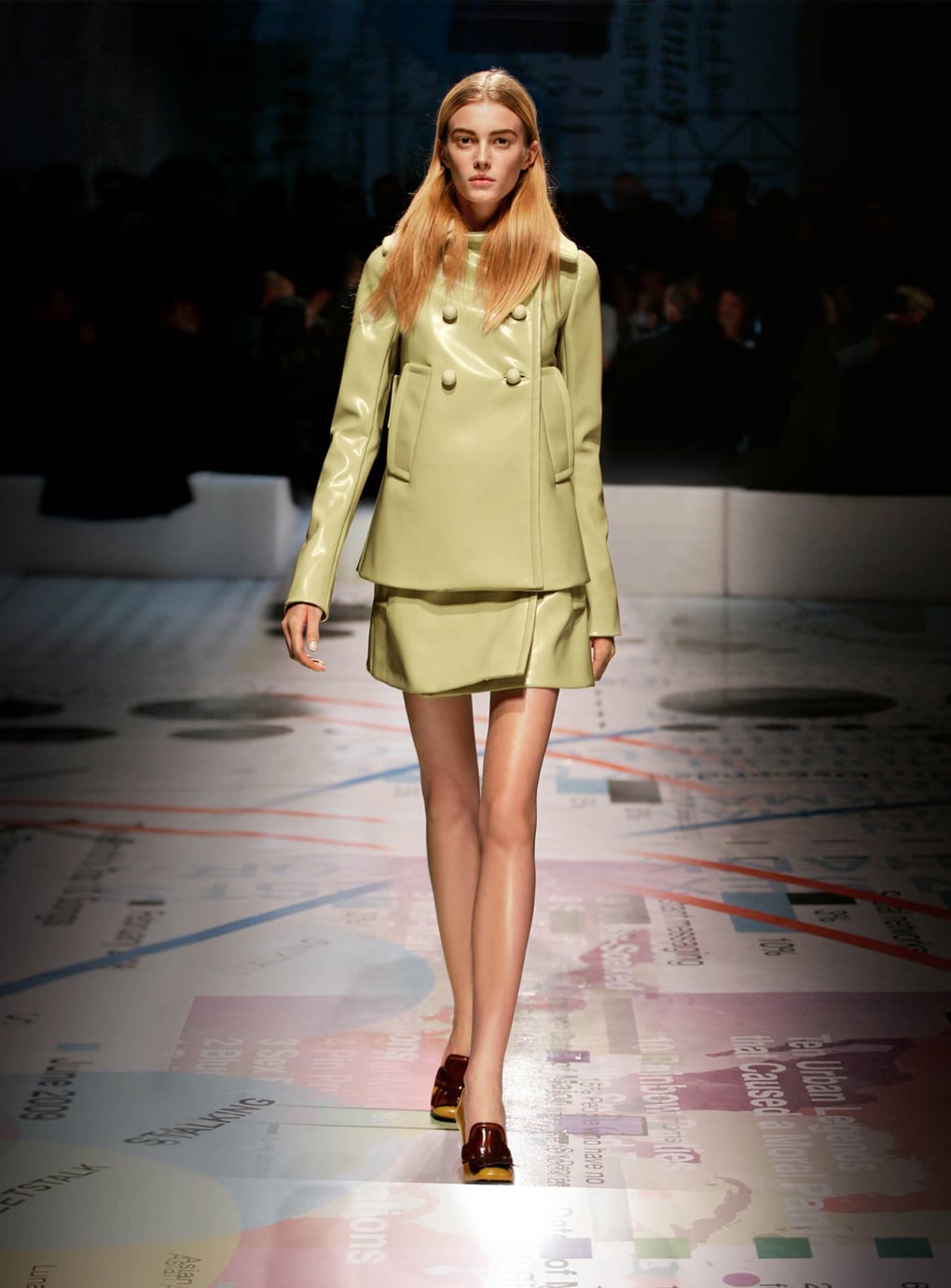Show Space
Every season designers reflect on developments in society as they anticipate new conditions. The quest for the most exciting phenomenon of today lead to the great manifestations of human culture: the city. Its multiplicity of programs, materials, colors, atmospheres and information is the urban context for many types of people and also the source for creating a variety of characters.
For this reason the show space is designed as the abstraction of cities and integrates the collection in a real but idealized set up. Rooms and city program are rebuilt in a most generic way by the use of special materials such as foam, industrial checker board, resin, plywood that give them an identifiable and common character.
A pink music hall for the show’s DJ and a traditional Prada store with its checker board floor are part of this urban environment. A bar clad with an industrial metal checker plate and another counter at which the audience casually stands while observing the model walking by are symbols for integrating the fashion show moment into real life.
As the actual movie theatre is a place of observation and fulfilling dreams, the fashion show space contains its own Cinema stage allowing the audience to perceive the model wandering through this surreal city context from a higher perspective. A “Central Park” is defined by poured green resin expressing the artificiality of the set up.
Wallpapers in the “News centre” show an enormous amount of information displayed in real life but also advertise in the context of the “E-Store” for yet unimaginable products. A projection displayed in front of the “Street space” tells the story about life in the city in its whole variety as it happens all around the world.
A diagonal promenade dissects the grid of heterogeneous rooms and short cuts the complexity of this small city as the model walks down this run way. It leads directly to the guests’ entrance and make them feel like the model, as the model vice versa becomes the guest. Eventually the trajectory leads through the individual spaces exposing the look to their inhabitants.
Credit: OMA/AMO



























































